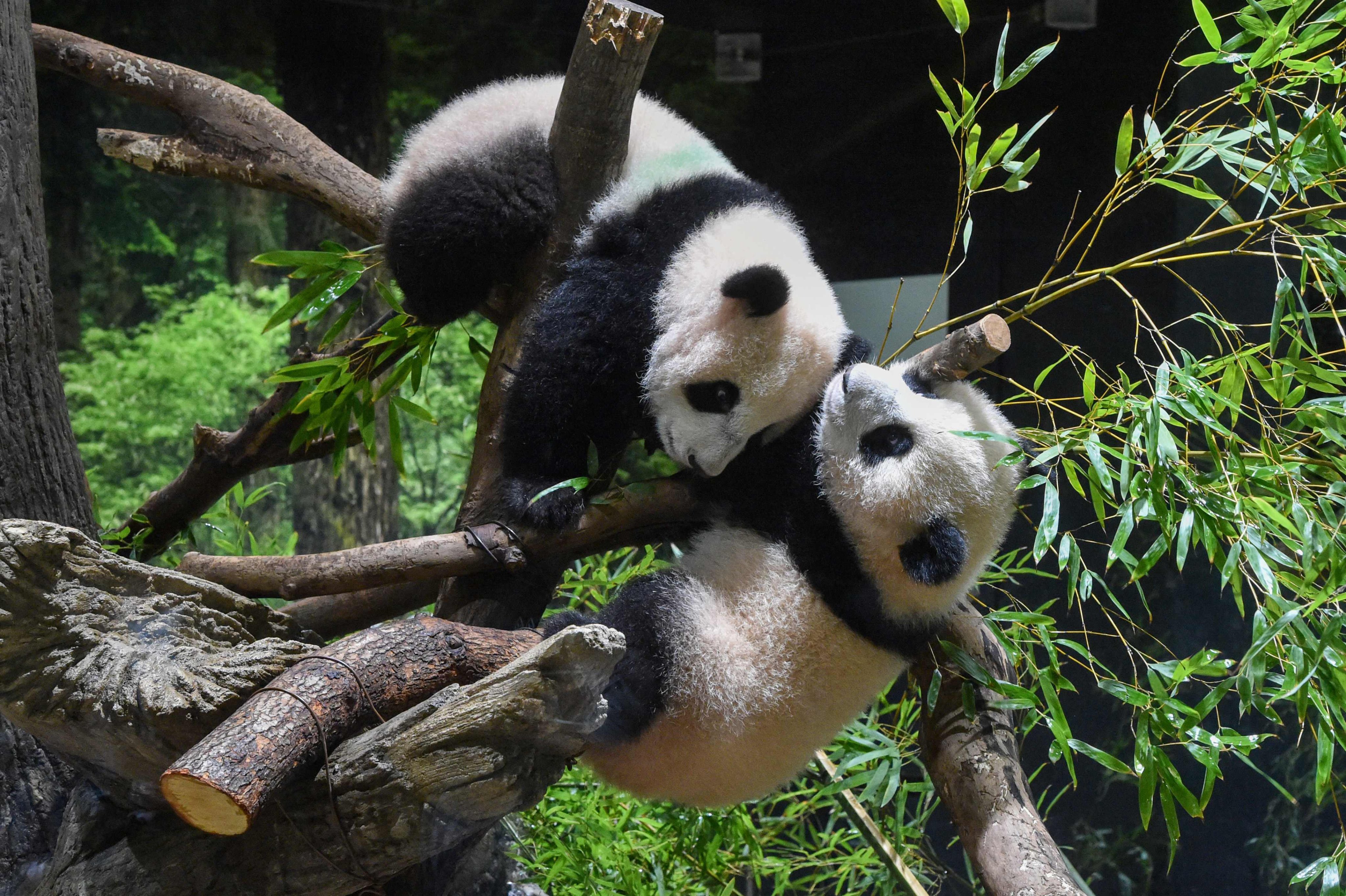
The National zoo commemorated 50 years of its iconic pandas’ exchange arrangement with the Chinese government. The zoo’s most famous inhabitants, Pandas, had an enthusiastic breakfast in front of adoring audiences on Saturday.
When giant panda mama Mei Xiang and her cub Xiao Qi Ji got their hands on the cake which was made from frozen fruit juice, sweet potatoes, carrots, and sugar cane, it lasted around 15 minutes.
Xiao Qi Ji’s father, Tian Tian, sat through the majority of the morning festivities, munching bamboo in a neighboring cage, his chomping noticeable during a speech by Chinese envoy Qin Gang. The ambassador praised the bears as “a symbol of friendship” between the two nations.
Pandas are nearly totally solitary creatures by nature, and Tian Tian would almost certainly never meet his child in the wild. For lunch, he was given a similar dessert.
Saturday’s ceremony highlighted the success of the global giant panda breeding program. It has helped bring the bears back from the verge of extinction. The 1972 agreement began after President Richard Nixon’s historic visit to China.
Miracle
:quality(70):focal(-5x-5:5x5)/cloudfront-ap-southeast-2.images.arcpublishing.com/tvnz/WJVLGAILWNDAVAGKPX44VXJXAM.jpg)
Due to Mei Xiang’s old age and the fact that zoo workers executed the artificial insemination operation under severe limitations shortly after the COVID-19 pandemic closed the whole zoo, Xiao Qi Ji’s birth in August 2020 was no less than a miracle. Mei Xiang, who was 22 years old at the time, was the oldest giant panda to give birth in the United States.
Normally, a combination of frozen sperm and fresh seme of Tian Tian would have been useful. However, zoo officials merely utilized frozen semen to reduce the frequency of close-quarters medical treatments.
Bryan Amaral, the zoo’s senior curator for mammals, also stated, “It was definitely a long-shot pregnancy.”
The now 20-month-old cub has been given the name which translates to “little miracle” in remembrance of that long shot. His birth, which occurred amid the pandemic, spurred a new surge of panda-mania, with viewing on the zoo’s panda-cam Livestream increasing by 1,200 percent.
“I know how passionate people are about pandas,” Amaral then says. “I’m not surprised by that passion at all.”
When the zoo first opened at 8 a.m., visitors flocked to the panda section in massive numbers. Lorelai and Everley Greenwell, sisters aged 6 and 5, dashed toward the enclosure, yelling “Pandas! Pandas!”
They watched the cub bounce around, try to wrestle his mother, and also rip the zero off the ice cake’s enormous 50.
Their mother, Kayleigh Greenwell of Mount Ranier, Maryland, said of her daughters, “They knew this was coming. We’ve been talking about it all week.”
Giant Panda population

Ling-Ling and Hsing-Hsing, the zoo’s original 1972 panda pair, were popular for decades, but panda pregnancies are notoriously difficult, and none of their babies survived.
Mei Xiang and Tian Tian came in 2000. The couple has since given birth to three more cubs through artificial insemination: Tai Shan, Bao Bao, and Bei Bei. Under the terms of the zoo’s arrangement with the Chinese government, all of them moved to China at four years.
Similar arrangements with zoos all across the world have helped the giant panda population recover. The species had reduced to just over 1000 bears in the 1980s. It has subsequently been removed from endangered species listings.






